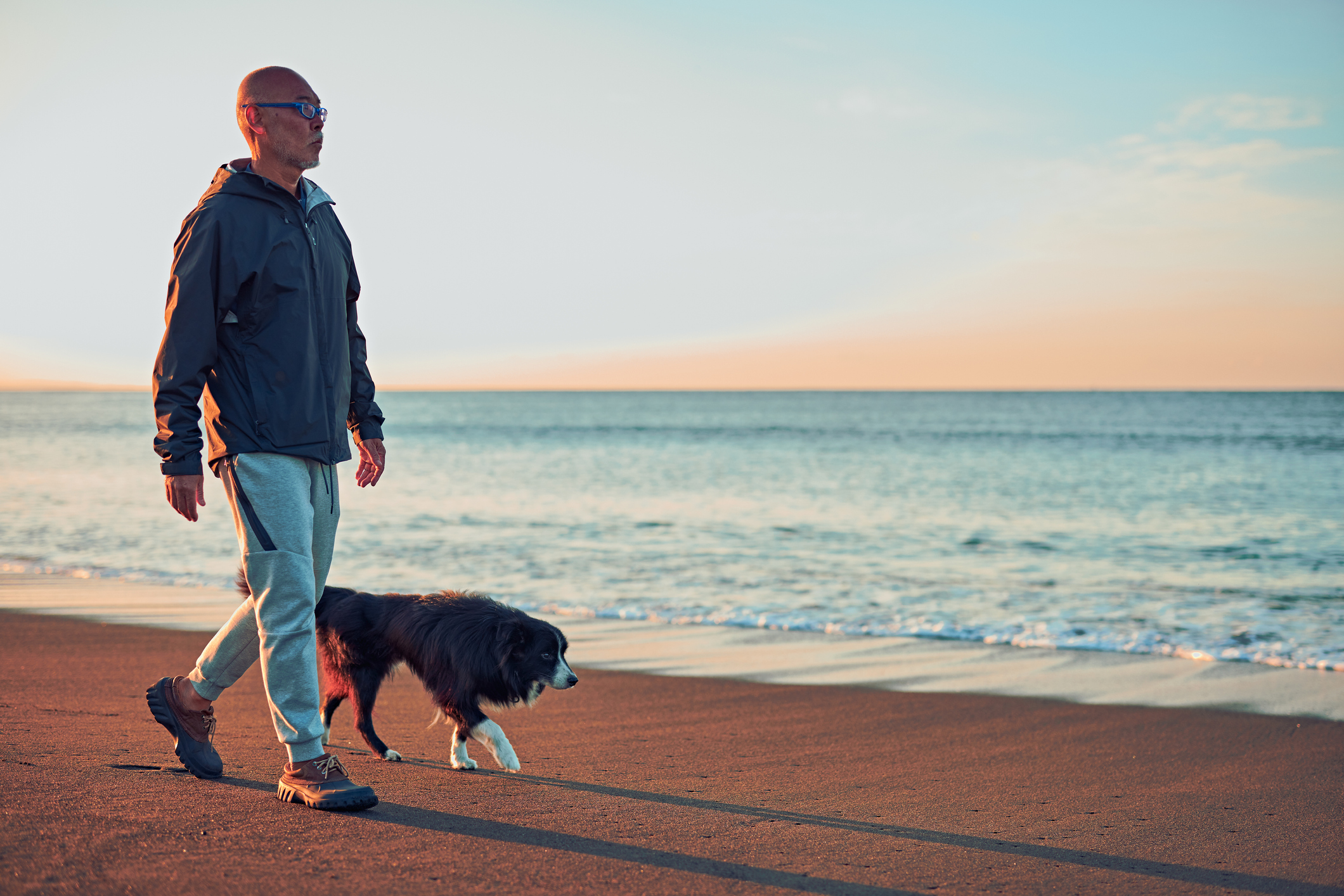
Feb 15, 2022 | By, For Pet's Sake
Commit to exercising now to protect your pet later
Exercise never goes out of style. It’s a requirement for staying healthy no matter what age you are. This applies to pets as well as humans, yet the number of overweight dogs in the United States is appallingly high. Recent research shows more than half of dogs in the U.S. are overweight or obese, which means many dogs aren’t receiving enough exercise or building strong habits for the future.
As pets age, exercise becomes more challenging and the effects of not exercising become more severe. Veterinarian advice says that even a few pounds over the limit is enough to negatively impact your pet’s health. It’s all relative. 5 pounds for a 200-pound human seems small, but 5 pounds for a 25-pound dog is 20% of their overall body weight.
The more the number on the scale increases, and the longer that number stays high, the more vulnerable your pet becomes to the following health problems:
- Cancer
- Liver disease
- Kidney disease
- Arthritis
- Diabetes
- Urinary tract disease
- Heart failure
- High blood pressure
The harmful effects of obesity can snowball quickly. Diabetes, heart disease and kidney disease can prevent an animal from regulating their temperature and handling cold weather, so exercising consistently with your pet will get more difficult as they develop more obesity-related health conditions.
Try the following tips to commit to exercise now and in the future.
- Dogs are creatures of habit. Go for walks at the same time each day if possible.
- Find what your pet loves. Usually, dogs are motivated by food or toys. If they love food, select a high-quality treat and reward them for doing a physical activity. If they love toys, you’ll have no problem playing fetch or tug-of-war with them. Some dogs love to run, which can be a good way to encourage you to fit in your daily exercise at the same time. There’s no sense in forcing your to do something they dislike and getting discouraged when they don’t listen.
- Stick to their allotted meals. Don’t give in if they start asking for more, and don’t allow them to self-regulate. The discipline will teach them that food is not unlimited and that mealtime is part of a routine.
- Look for low-calorie treats that will entice your pet to do what you want while keeping their weight in control. You can also choose to give high-quality treats in small amounts. A little bit goes a long way with something that smells and tastes good to your pet.
- Take it easy as your pet gets older. Opt for controlled play instead of dog parks where they could get injured by a younger animal that’s more limber.
Until you notice the obvious weight gain on your pet’s body or on the scale, there are other ways your pet will show you they aren’t receiving enough exercise. They may destroy things around the house, act overly energetic, bark and whine, or run out of stamina quickly when you do exercise. The easiest way to evaluate how much exercise your pet is getting is to take an honest look at your schedule each day. If you don’t have a time period reserved for your pet, you should dedicate at least five minutes and work up from there. Your pet will start looking forward to it each day, and they’ll be healthier for it.
Have a question about pet health? Want to become the best possible pet parent? Find helpful tips, reminders, and insight to giving your furry friend the best possible care with For Pet’s Sake! Learn more at drdevonsmith.com.

